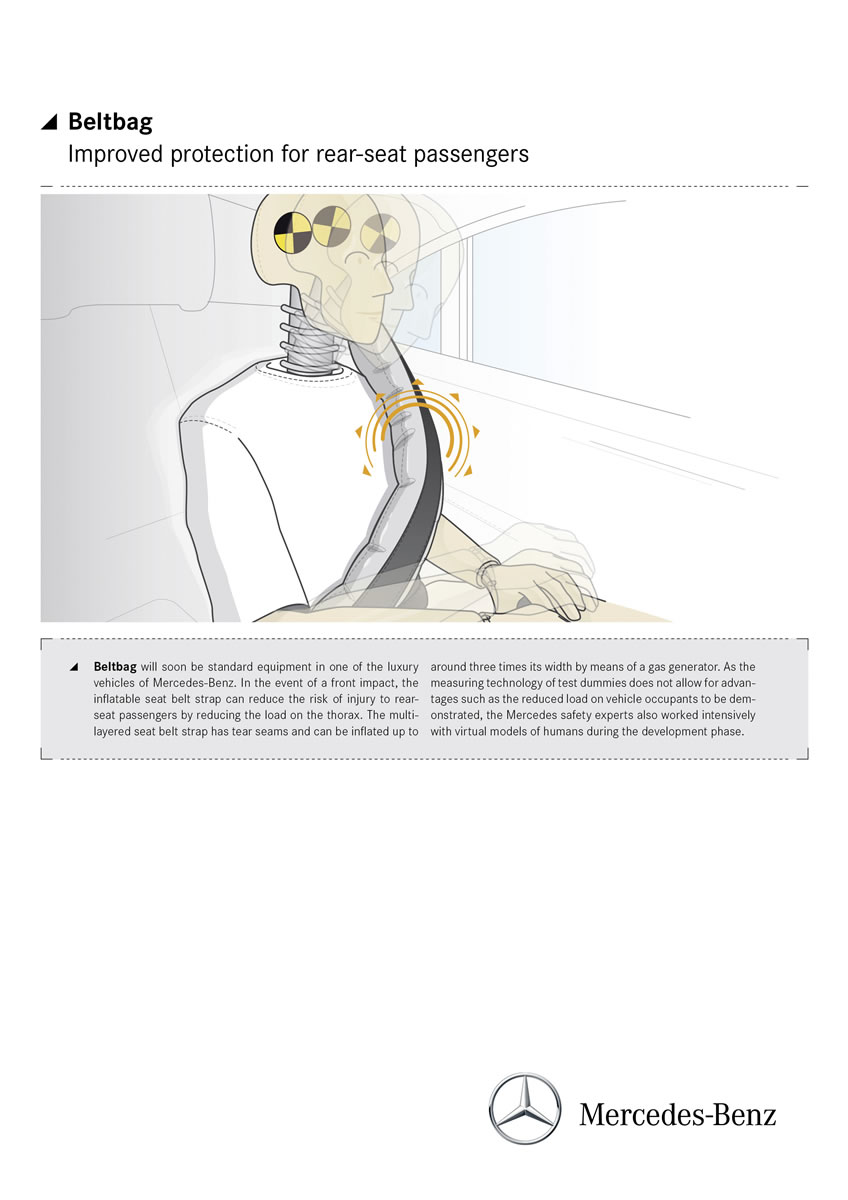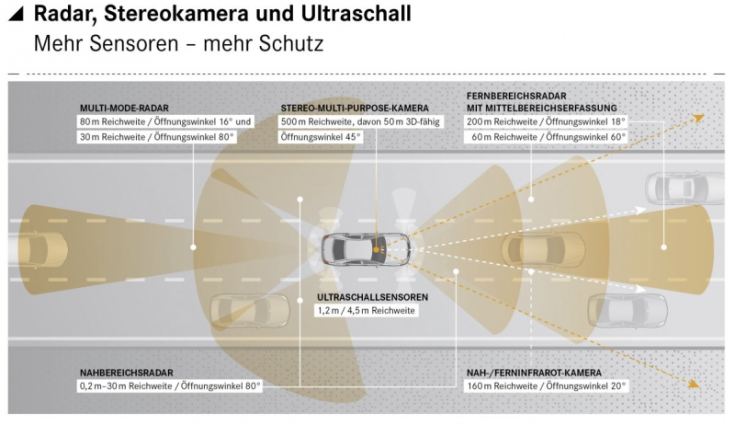The evidence is now clear: drivers of Mercedes vehicles are safer on the road than drivers of other car brands. This is the result of a study of Mercedes accident research based on official, anonymous data samples from the Federal Office of Statistics. Having looked at 18,748 accidents resulting in personal injury during the period from 2003 to 2007, the study found that the risk of being seriously or fatally injured as the driver of a E‑Class, is 10.4 percent lower than for comparable vehicles of other brands.
The study did not even allow for the fact that Mercedes-Benz vehicles are involved in accidents less frequently than the vehicles of other brands – primarily because, among other reasons, Mercedes-Benz was the first manufacturer to introduce ESP® across the board. The study of accident severity only took into account accidents resulting in personal injury. The criteria were initial registration from 2002 onwards, as well as a performance and weight class corresponding to the E‑Class.
The result represents clear evidence of the contribution made by the passive safety systems of Mercedes-Benz to reducing the consequences of an accident. Thanks to adaptive front airbags and belt-force limiters, which can adapt to the severity of an impact, rollover sensors, windowbags as standard and an intelligently designed body structure which provides occupants with excellent protection even in the event of severe collisions, at the time of its world premiere in 2002 the E-Class became the new benchmark for passenger car safety in the luxury class.
In the course of a facelift of the E-Class in the spring of 2006, the Mercedes engineers continued to achieve further substantial advances in the field of high-level safety, equipping the E-Class with safety systems which no other passenger car in this class was able to offer. At the time PRE-SAFE® was introduced, the interlinking of systems for accident prevention with occupant protection marked the start of a new era in this vehicle class. This Mercedes invention takes advantage of the time between detecting an accident-prone situation and possible accident damage for occupant protection. With the new E-Class, Mercedes-Benz has continued to build on the advances being made in the field of safety. Around a dozen new or enhanced driver assistance systems contribute to preventing accidents and reducing the severity of an impact. These include the ATTENTION ASSIST drowsiness detection system, as well as the optional DISTRONIC PLUS proximity control system and PRE-SAFE® Brakes with autonomous emergency braking. For the first time, PRE-SAFE® can also make use of information from the short-range radar sensors in the front bumper to tighten the front seat belts in the very last split second before an unavoidable accident, thus helping to reduce the loads suffered by the driver and front passenger in a crash.
With nine airbags as standard, four seat-belt tensioners and belt-force limiters as well as crash-responsive NECK-PRO head restraints for driver and front passenger, the new E-Class provides an even more comprehensive level of safety equipment than its predecessor. As well as the air cushions, which can be activated in milliseconds in the event of an accident, there are also two adaptive airbags for the driver and front passenger, a kneebag for the driver, two sidebags in the front seat backrests, and also two generously sized windowbags which span the area from the A to the C-pillar in the event of a side impact. For the first time, pelvisbags have also been incorporated for the front seat occupants. These can also help to reduce loads in the upper body and pelvic areas in the event of a side collision. Sidebags are also available as an optional extra for the rear passengers, while another safety innovation includes automatic adaptive belt-force limiters in the rear, now available for the first time as an option from Mercedes-Benz. These adjust automatically to the size and weight of the passengers.


